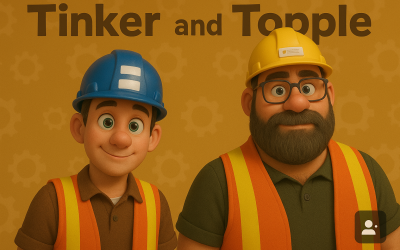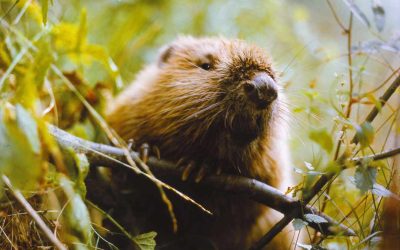Overview
In this outdoor learning activity, learners will solve messy playground problems by building solutions! Whether in fall, winter, or spring, learners will identify areas in their outdoor spaces in which seasonal changes affect the ability to get around. Using natural materials, learners may embark on constructing bridges, paths, tunnels, or water collectors – so that all learners can move and play together!
NB Curricular Connections
English Language Arts
- Strand: Interactions – Big Idea: Expression – Skill Descriptor: Express and discuss thoughts, feelings, experiences, ideas, and opinions, and consider those of their peers.
- Strand: Reading – Big Idea: Reading Comprehension – Skill Descriptor: Connect and respond personally and critically to text.
Mathematics
- Strand: Shape and Space – Big Idea: Measurement – Skill Descriptor: Estimate and measure using personal referents and measurement tools
Personal Wellness
- Strand: Wellness – Big Idea: Personal Safety
What You’ll Need
- Book – We Move Together (by: Kelly Fritsch, Anne McGuire, and Eduardo Trejos)
- Our Outdoor Spaces Inventory Printable – see attached PDF (1 per small group)
- Outdoor Building Solutions printable – see attached PDF (1 per small group)
- Pencils
- Clipboard (1 per small group)
- Twine or thick string (some per group, optional)
- Natural materials (sticks, leaves, stones, brush, snow, etc.)
- Mini Shovels (optional)
Instructions
Outdoor Expectations: If students have not had much outdoor learning experience, before heading outdoors, discuss with learners the difference between learning inside of the classroom vs. outdoors. Using a piece of chart paper, co-construct 4-5 learning expectations for outdoor learning. (Examples: We will respect all living things. We will not leave behind any materials that might harm living things, etc.) Have learners print their name on the expectations chart, as a symbol of their commitment to following them, to the best of their ability.
PREP and STEP: Divide learners into small groups of your desired size. Each group needs: a clipboard, a pencil, an Our Outdoor Spaces Inventory & Outdoor Building Solutions printable, and outdoor attire. Learners can place all the printed sheets onto a clipboard. Once groups have all their materials, have them STEP in line and follow you (with the Read Aloud, twine and optional shovels) to the desired outdoor location.
Read Aloud – We Move Together: Ask learners: “How did we move to get to this exact spot? Were there any specific places along our route that were more difficult traveling on than others and why?” Allow learners to share their mode of movement, as well as spots that were more challenging to navigate (tree roots, uneven ground, mud puddles to get around, a snowdrift, etc.) Be mindful to include other modes of movement if all students walked on their feet (such as: wheelchairs, braces, walkers, crutches, etc.) Then, read the book. Discuss: “What stood out to you in the text or illustrations about the action of “move”? How does this story change the way you think about how we move together?”
Our Outdoor Spaces Inventory: Using the printable provided, have learners sketch out a bird’s eye-view map of their outdoor spaces, with the school building being clearly visible. Have them include pathways, playground areas, outdoor classrooms, and sports fields. Then, give time for learners to survey the grounds, ensuring accuracy of their map, as well as looking for potential areas where mobility may be affected due to seasonal changes (mud, excess water, excess wind and snowdrifts, steps) or simply the natural landscape. Have learners identify these areas on their map by circling them.
Discussion: Come together, as a whole class, and allow learners to share their findings. Ask: What did you discover? Are there multiple areas that need a building solution? Is there one area that stood out to your group more than others? What seasonal changes, barriers, or natural landscape issues did we notice around our outdoor spaces? Are there other environmental factors affecting these areas (soil erosion, wind, changes in temperature, etc.)? Re-read pages 16-19 of We Move Together – “We notice when things are unfair, and it helps us get creative. We make plans. We solve problems. We build something better.” Determine that this is our goal.
Outdoor Building Solutions: Choose the best option for your group of learners – a) complete a building solution for one identified problem area as a whole class OR b) determine a few problem areas and have learners work in small groups. Once decided, have learners begin to plan their outdoor building solution. Using the template provided below, learners can take inventory of what they have to work with, as well as sketch out an initial building plan with approximate measurements. Have groups share with other groups before building, for feedback and suggestions.
Build It & Check It: Allow learners to build their building solutions! When finished, collect data as you periodically check on the solutions for wear and tear, maintenance, feedback from other classes, and any weather damage. After 2-3 weeks, what is the data telling you? What information have you gathered? Has the building solution been a success? Could it be improved?
Real Life Builders: Discuss with students the various community members who build solutions everyday (carpenters, landscapers, maintenance workers, safety inspectors, etc.). Invite a local expert to come and see your own creations and give feedback.
Extension Ideas
- Partner with a Middle School or High School Shop Class to build more permanent solutions.
- Needing more than natural materials for safety reasons? (Particularly for wheelchair ramps or accessibility access) – why not fundraise to purchase the materials and ask local experts on the best solutions. Be a voice for all students!
- Looking at the messy outdoor areas – research the soil compositions and types of rock that are present around the school grounds. Is there a connection to Climate Change? Other solutions could come from this research.
- Investigate and research the rights and responsibilities of citizens – particularly in relation to accessibility and mobility in schools and in your community.
Reflection Activity
Please see the attached PDF for several choices on how you and your learners can reflect upon today’s activity.
Acknowledgements
- Learning Through Landscapes: https://ltl.org.uk/resources/dam-building/, 2023.
- Go Explore Nature: https://goexplorenature.com/2012/06/backyard-play-spaces-dirt-pile.html, 2012.
- Childhood By Nature: https://www.childhoodbynature.com/build-the-ultimate-snow-fort/, 2018.




